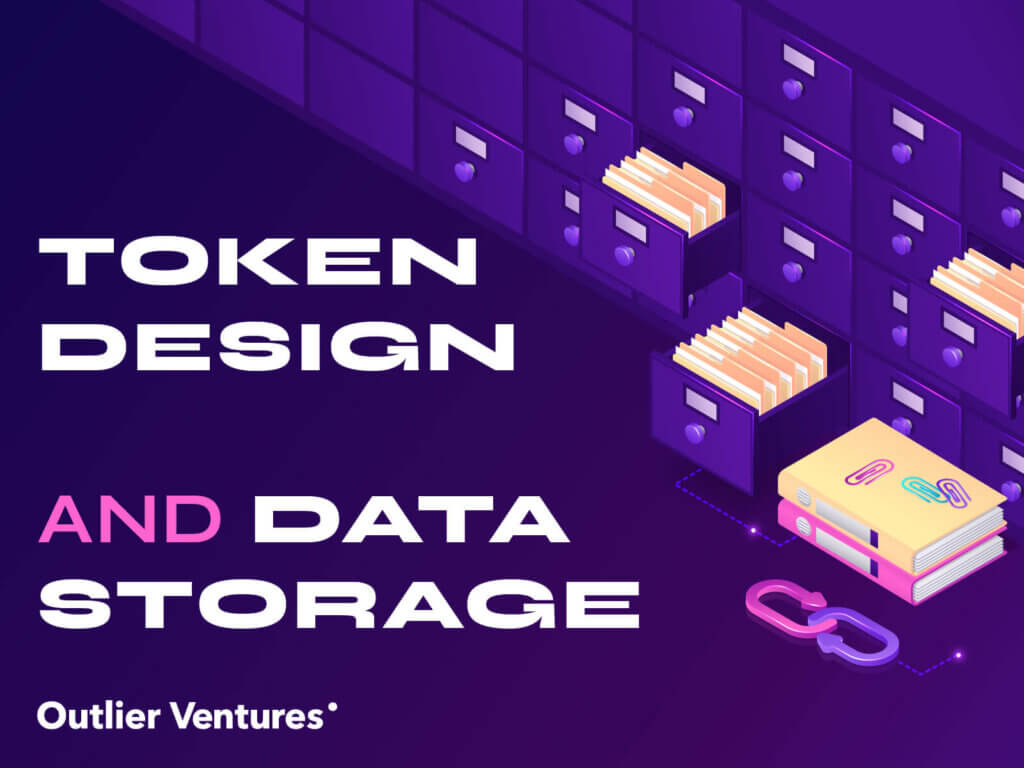First to introduce the P2P concept was Napster: a central service that connected people who had specific music files with others seeking said specific files. However, Napster was held liable for copyright infringement, and was shut down soon after.
Inspired by the vision and adequately informed about the censorship liability of centralization, distributed protocols such as Limewire, Gnutella, and Kazaa emerged. However, these distributed networks relied on specific semi-centralized parties for coordination. As you can imagine, these entities were eventually shut down leading to existential consequences for the network. The third iteration in this evolution reared its head in the form of Bittorrent. Unlike its predecessors, Bittorrent was decentralised enough that it was censorship-resistant.
Despite the decentralisation, torrents didn’t quite hit the mark. A misalignment of incentives meant that actors in the network did not have to ‘seed’ a file. This refers to making the file available to your peers after you have downloaded it. The more that people seeded, the more robust the network became with greater redundancy and improved download times for all.
The issue was that there was no explicit financial incentive to seed files. There were three main reasons that users did seed:
- Reputation (status in online forums)
- The implicit assumption that more seeding would lead to more users, more files being uploaded, and subsequently even more seeding
- Kindness, community, and camaraderie
Although there would be increased value brought to network participants as the network grew, there were no concrete reasons to engage in the behaviours that would lead to this, and there was no disincentive not to. See where we’re going with this?
Enter Bitcoin and cryptoeconomics…The advent of tokenized networks is the next evolution of file sharing, and perhaps the last.
Token Economics
In a decentralised crypto-network, participants do not act in the best interest of others due to an idealistic hope of future cooperation, but rather because these actions or behaviours are their dominant strategy.
The clear attachment of financial incentives to good behaviours in the network successfully thwarts the free-loader and principal-agent problem, should the microeconomics be correctly designed.
Crypto rewrites the incentives in a network by creating trustless systems, whereby stakeholders completing actions to maximise their returns will in turn maximise other stakeholders’ returns.
Decentralised data storage, and an intro to IPFS
There are different protocols for all manners of decentralised networks. When it comes to data storage, chief among them is the Interplanetary File System, “IPFS”.
IPFS does not actually have its own token, but is more so a base layer upon which token incentives can be overlaid.
According to its documentation, IPFS is a ‘distributed system for storing and accessing files, websites, applications, and data’. This means that when you want to access a file or data, your request for access is not sent to a central database, but rather to a group of different computers around the world, from where it is then downloaded. Firstly, this improves your chances of accessing the data (as it is being delivered from different sources). Secondly, once you have downloaded the data, your computer becomes a distributor as well – meaning the next person to download the file will have improved access as well.
When we access websites or files that are online, we go to a specific URL. This is the address of the file and where it resides. As mentioned above however, data in IPFS resides in multiple computers – thus it has multiple addresses. Because of this, when we access data in a decentralised network we do not request access to data that resides at a specific address. We request the contents of the data. IPFS addresses a file according to what is inside it, as opposed to where it is. This is akin to being able to find anyone at any time, not by having their home address, but by having a copy of their fingerprint which allows you to find them immediately wherever they are currently in the world.
This is somewhat related to the next important point about IPFS, which is that technically speaking IPFS is not a blockchain, but a Directed Acyclic Graph (DAG). Unlike blockchains where data is arranged into blocks and each block references its predecessor, DAGs are more free-flowing: data can reference other data points and exist in relation to them, as opposed to being in a block which exists in relation to the last block.

When considering torrents, the issue of incentives is hard to ignore. Why should someone seed and what incentive do they have to do so? The same questions can be asked here of IPFS.
In a continuous game, it is always in the participants best interest to cooperate, as this makes life easier for all the other participants and creates a positive feedback loop – ultimately benefiting the original participant as well.
In a one-shot game, the optimal move is to defect. In this context, that means to go and store some files in IPFS, but not run a node or store anyone else’s files. This is what Filecoin was created to address.
In addition to Filecoin, there are other tokens that were built to bootstrap supply and make interactions in these networks trustless. These other tokens are not built on IPFS, instead they use proprietary data storage networks. Prominent among these are Arweave, Storj, and Sia.
Let’s examine each of the aforementioned networks and their token incentives.
Filecoin
Protocol and Product
Filecoin attaches explicit financial incentives to IPFS. Now that we know what IPFS is, how do its incentives work? Funnily enough, Filecoin has quite a similar token design to Ethereum, going as far as to implement EIP-1559 as well, meaning transaction fees are burned. This does mean however that its revenue model is quite complex, with variable percentages of revenues being burned.
Where other decentralised storage networks mentioned in this article use various routing algorithms to determine how jobs are distributed across nodes, Filecoin uses orderbooks to match up supply and demand. Buy and sell orders are submitted to these order books by users and miners, respectively. When two parties are matched up, they enter an agreement and an off-chain micropayment channel is opened between them – these channels are later closed and settled on-chain.
There are three main actors in Filecoin:
- Users: entities using the network to store data
- Storage miners: store the data of users
- Retrieval miners: serve data to users from storage miners once it is requested
Token
Storage miners must continually submit proofs (Proof-of-Replication, Proof-of-Spacetime) to ensure that they have encoded and stored data correctly, and that they continue to store it. Should they fail to provide the required proofs, they run the risk of having their tokens slashed.
It must be noted as well that Filecoin uses a dynamic inflation rate, which adjusts according to how much decentralised storage space exists in the network. The more storage power that is live, the greater the issuance of new tokens. This provides strong incentives for miners to continually upgrade and provide more value to the network, even though they may have been miners for a while. In theory, this prevents an exodus of unhappy miners who may feel that rewards are much lower than they used to be. More details on how the issuance rate is determined can be found here.
The dynamic minting, as well as the dynamic burning (which increases with network congestion and demand) creates a sound equilibrium where miners are incentivised to continually add value (storage space) to the network – as it increases block rewards – but this increased issuance does not necessarily lead to hyperinflation and devaluation of the token as the more demand there is, the more tokens are burned. This keeps the supply in check and enables the token to capture value.
Arweave
Protocol and Product
Arweave has a slightly different value proposition to other protocols mentioned in this article. Instead of providing temporary storage, it provides permanent storage. Other networks enable users and storage providers to enter automated/off-chain contracts, where nodes are incentivised to store data while they are getting paid by users, and have a disincentive to lose data via fear of triggering a ‘slashing’ – either of tokens or reputation.
Arweave’s incentive model encourages miners to replicate as much data as possible and maintain a copy of the whole blockchain and its data, ensuring its permanence. This can be thought of as renting (Filecoin) vs. buying (Arweave).
This is possible because when a miner gets the right to mine a block, they must not only link it to data in the previous block, but also to another randomly selected block in the sequence of blocks, which is called the ‘recall block’. If the miner fails to provide data from the recall block, they forfeit gaining the block rewards. Thus, they have an incentive to not only store information relating to the last block, but also all previous blocks.
Arweave uses Proof-of-Work for sybil resistance and a Proof-of-Access (miners proving that they have access to the recall block) to ensure miners maintain a full copy of the chain.
The main stakeholders in the ecosystem are:
- Consumers: entities seeking to store data permanently on Arweave
- App developers: developers that build dapps on Arweave (It has smart contract functionality)
- Miners: maintainers of the network and providers of storage space
Token
Consumers pay miners in the native token $AR for storage costs. The token is also used to pay transaction fees. Due to the variable demand for permanent data storage, the token design includes an ‘endowment fund’, to which a portion of every transaction fee is directed. This fund is used to subsidise miners and keep them online when demand is low and miner profitability is negative. More granular detail about the pricing of transactions and the emittance of tokens from the endowment fund can be found in the Arweave Yellow Paper.
Where other decentralized storage networks may at times suffer from miners going offline when the cost of mining exceeds the rewards, Arweave ensures liveness by subsidizing miners from the endowment fund. In other PoW chains, such as Bitcoin, this is not necessarily a problem as more miners going offline means less hashrate, at which point it may make economic sense for miners to power up again. Equilibrium is obtained. This is possible in Arweave, however the network does not just exist to provide secure, censorship-resistant blockspace, but instead to provide a network for permanent data storage and data retrievability. Therefore, miners going offline – even temporarily – can mean that users might not be able to retrieve their data in a timely manner; this defeats Arweaves whole raison d’etre.
The architecture of the network ensures perma-storage of data and perma-liveness of miners, and the token works in parallel to bootstrap the supply side, and capture the growth of the network in the value accrued to it.
Storj
Protocol and Product
Storj is a network that relies upon SLAs (Service Level Agreements), redundancy, and cryptography for data storage. It is largely different to the networks mentioned in this article, in that it does not utilise a blockchain or a DAG to coordinate stakeholders in the network, despite its token existing on Ethereum.
Thus, it does not have a full crypto-economic mechanism and relies more upon SLAs and reputations to align incentives. This is neither a good nor a bad thing; merely a design decision. It does however mean that the $STORJ token itself has very poor value capture. Although there is a capped supply, and increased demand for the token as the network grows, there is no incentive for holders of the token to keep holding it.
There are three main stakeholders in the network:
- Satellites: a server or collection of servers that distributes data to nodes, facilitates payments, and audits nodes
- Storage nodes: node that stores data in exchange for $STORJ tokens
- User: an individual user or consumer application that pays to store data on the network
Token
The use of the token here is quite simple – it is used merely for payments and can be thought of as storage credits.
Nodes have to build up a reputation before being trusted with significant amounts of data. They do so by passing the regular audits administered by satellites where they are ordered to provide a PoW (a Proof-of-Retrievability in this case). This proves that the nodes can retrieve the data they are storing at a moment’s notice and that they have consistent uptime. More detail around reputation scoring can be found in the whitepaper.
Passing these audits leads to building up a stronger reputation, which naturally leads to receiving more tasks and data, then to receiving more payments. Voila. As you may have guessed, this cycle can operate in reverse if nodes are found to not be doing their job well.
Although incentives are aligned in this network, they are upheld in many cases via off-chain agreements (SLAs) as opposed to pure token incentives. Currently, none of the stakeholders are actively encouraged to hold the token. The only reason someone would have to buy it (aside from speculation) would be to use it for payment – however the recipient of said payment has no incentive to hold it and likely dumps the tokens. This is not a problem per se, it just makes the value accrued to the token unclear. However, some companies and/or teams behind a protocol may choose to raise and capture value via equity as opposed to a token sale.
Sia
Protocol and Product
As reflected in the short manifesto on the homepage, Sia holds the tenets of decentralisation core to its mission. However, it is not devoid of controversy.
Anyway, Sia is a marketplace where demand (entities that want to store data) meets supply (data storage providers). It is a competitive market where the data hosts must set favourable fees, stake tokens, and optimise other fees according to certain criteria in order to provide as enticing an offer as possible to consumers and beat the competition.
The stakeholders are:
- Hosts: entities renting out storage space
- Renters: consumers of said storage space
- SiaFund holders: earn dividends by getting a percentage of all transaction fees
- Miners: miners maintain the blockchain, bake in the contract agreements between Hosts and Renters, and compete to solve a PoW algorithm to earn block rewards
Token
Sia actually uses a dual-token model, where SiaCoin ($SC) is used for gas and payments, and SiaFunds ($SF) are a security token that accrue value by having a percentage of every transaction, 3.9%, distributed to holders of $SF.
Where $SF has a capped supply – only 10,000 in existence – $SC is inflationary and has an unlimited supply. In this design, the value accrual is to the $SF holders. However, even then the mechanism may not be that robust as the dividends are paid in $SC, and if the new issuance outstrips the demand for the network $SC may face a declining price; meaning that the rewards $SF holders are earning are decreasing in value.
In short, The demand for storage in Sia must be greater than the new issuance of tokens, else even $SF holders may not make good returns on their investment. Furthermore, miners may not have a strong incentive to hold tokens after earning them, further increasing downwards pressure on $SC.
Final thoughts…
Even though networks may have similar goals – in this case: data storage – the main differences are found in protocol architecture, implementations, and roles.
When it comes to data storage networks specifically, it seems the biggest design choice is regarding how the supply and the demand in the network interact:
- In a competitive marketplace, where storage providers vie for deals
- Via a routing algorithm, which automatically distributes data across the network according to predefined criteria
The design of the token is what determines whether the roles in the network are filled and whether the entities filling them behave as intended. Filecoin, Arweave, Storj, and Sia use different methods of making sure stakeholders behave in a positive-sum way, and thus the tokens associated with each network also function and capture value in different ways.
The token design cannot be separated from the technical implementation of a project; both must be outlined and developed hand in hand. If anything, the technical details precede the token design in importance and the order in which both the elements must be considered. Ultimately, demand for the network will come from the utility of said network or how good the product is. The token has the power to help bootstrap the supply and demand of a marketplace, but it cannot sustain it indefinitely if the product is lacking or does not have sufficient product-market fit.
The networks that garner the most traction and achieve the most success (whether measured in network activity or market capitalization) all have the following:
- Strong product-market fit (on both supply and demand sides)
- Clear incentives and deterrents
- Clear mechanism that accrues value to the token as the network grows
There is no universal ‘best way’ of structuring and deploying the technical architecture of the network, just as there is no universal ‘best way’ to design a token. Once a product is designed well, it is then imperative to design an equally worthy token economy in order to keep the positive flywheel spinning. These incentive alignment mechanisms have the power to bootstrap, empower, make, or break the network – better design them well.
If you’d like support in building your token ecosystem and launching it, talk to us about our accelerator and token launch programs, Base Camp and Ascent. Our in-house experts focus on supporting startups with refining their business strategy, establishing and solidifying product-market fit, stimulating community growth, and defining token design.




